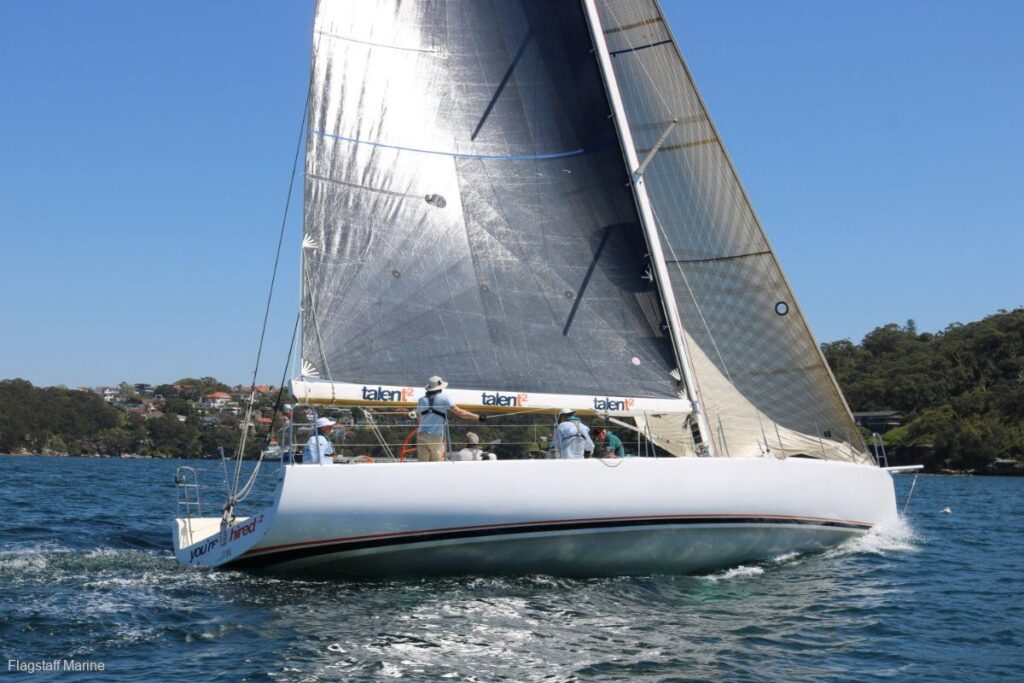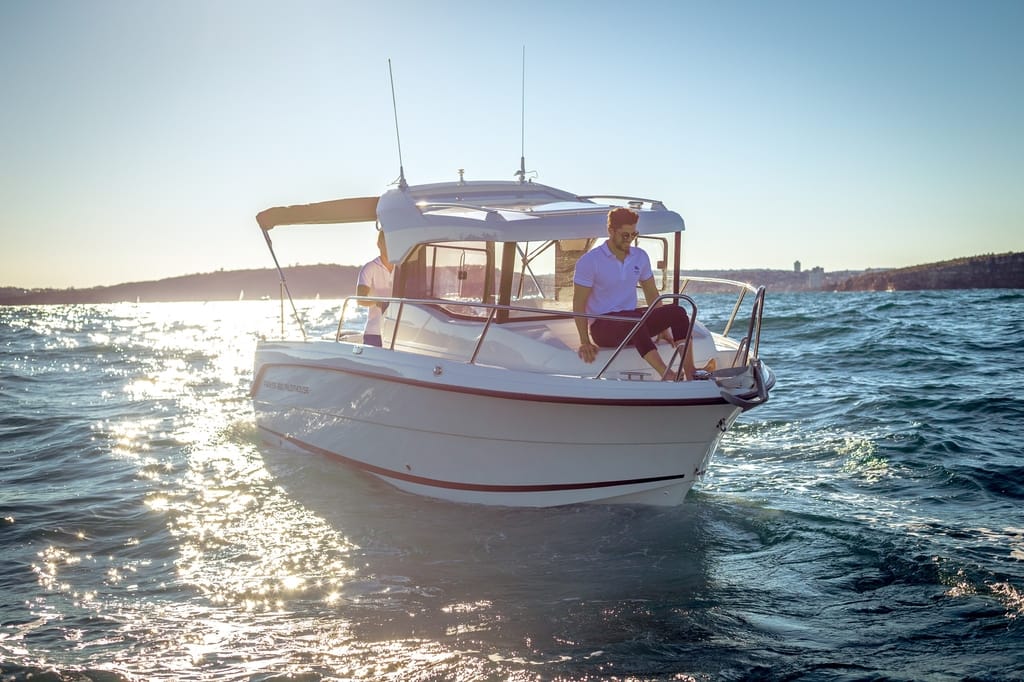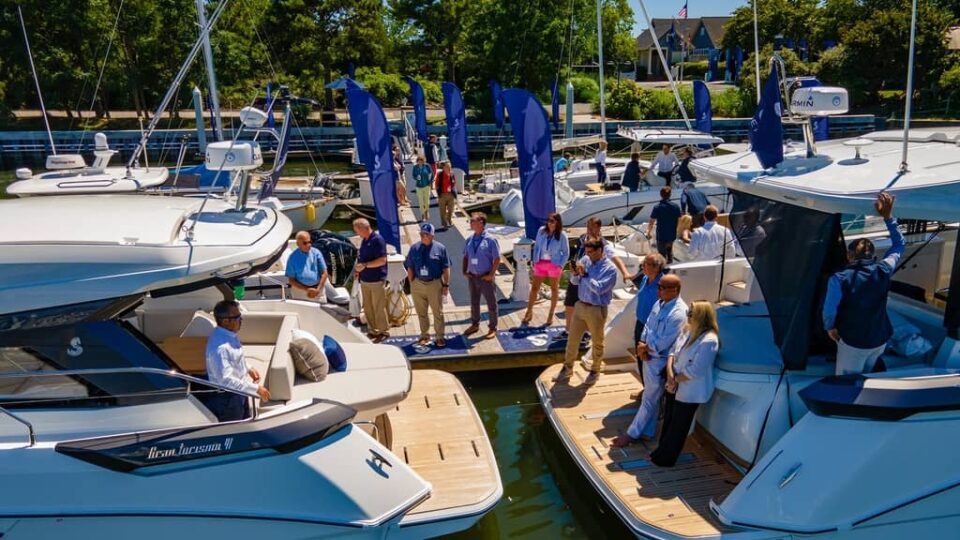Sailboats Vs Powerboats: Why Sailboats are Better
Are you thinking of which boat to purchase and which will cover your needs? Then, continue reading this article so as to find out the pros and cons of sailboats and powerboats as well as why are sailboats better than powerboats. Sometimes, it can be difficult to choose between having a sailboat or a powerboat. Both will have the same marina costs (depending on their size), and they will both have maintenance fees connected to their motors and other gear. The key distinctions are in how you want to use it and the type of water experience you plan to have. If you want to go fishing and relax on the water, a powerboat is the way to go. A sailboat will be more your style if you take satisfaction in navigating the water and weather with your own hands. So, let’s dive deeper into the subject, follow me!
Sailboat Pros
A sailboat is ideal for people who wish to connect with the ocean and weather on a primitive level, as well as learn to navigate the world on their own. A sailboat is a boat to choose if you want to have the ultimate boating adventure and see the world by boat. Also, sailboats are literally powered by the wind. Although most sailboats have modest motors for docking, some owners take pride in their abilities to sail and dock while relying solely on the tide and wind. In other words, a great plus of sailboats is that they’re more environmentally friendly than powerboats. Let’s see other key advantages of sailboats:
- There are small boats that have trolling motors onboard. However, many sailors use the motor as little as possible and prefer to rely on the wind and tides. As a result of not having a large engine, you save money on both fuel and maintenance costs. And, as you minimize motor usage you subsequently minimize your impact on fuel consumption.
- A sailboat is the only boat that can cross large distances, even internationally. Meaning that you don’t have to wait for the proper weather conditions, as your sails can take you anywhere on the globe. But, of course, you would need a seaworthy vessel capable of crossing oceans. And, you should always check the weather forecast beforehand, even if you have a sturdy sailboat.
- Because a sailboat’s engine is much smaller than a powerboat’s and isn’t utilized nearly as often, fuel and maintenance costs are far lower. Also, their engines are cheaper to operate as they use less fuel.
- On a sailboat, it’s easier to socialize because it’s quieter, and the captain controls the boat from the stern, allowing them to easily communicate with everyone.
- Under calm conditions, sailboats don’t create much noise, just the noise of the wind and waves. Meaning that most of the time your voyage is silent since sailboats rely on the wind rather than the force of an engine.
- Though it may appear that the powerboat is geared for the adventurous, the sailboat is the one offering the greatest adventure. You can plan the perfect experience that is only limited by your imagination and stamina by mapping your voyage according to the weather and tides. There is no need for fuel; all that is required is labor.
- Sailing provides an active way of life. People who own powerboats are said to live for the destination, whereas those who own sailboats live for the voyage. A sailboat journey necessitates continual sail adjustment, steering, and, on occasion, changing your plans if the weather changes. Meaning that you have to pay attention to detail as well as be vigilant during the whole voyage. And, that’s why single-handed sailing is considered to be a challenging way of sailing.
- A good day on the water on a sailboat provides a sense of fulfillment that a powerboat cannot provide. It comes from using the power of nature and your own body to move to and from your desired location.
Sailboat Cons
- Small to medium sailboats have less room on and below deck due to the shape of the hull and the requirements of the masts and sails. So, you’ll need to purchase a larger sailboat to get a comparable amount of space and additional amenities.
- You can’t sail if the wind isn’t on your side, so your voyages may not go as planned. When you live and travel by boat, you have to organize your travels according to the elements and weather patterns.
- While powerboats can have multiple levels and provide sun protection, a sailboat’s masts, sails, and rigging provide less sun protection when you’re on the deck.
- When it comes to the expense of maintaining different boats, it’s often six of one, meaning half a dozen of the other. Bear in mind that the most significant expense for sailboats is the sails and rigging. As with everything, the wear on sails depends on how much use they get, but sails should typically be replaced after about 3,500-4,000 hours of use, and the rigging should be replaced every ten years or so.
- The shape of a sailboat’s hull means that it can sit on a lower level in the water. So, you can’t sail in shallow waters easily or get too close to beaches and tight coves when anchoring.
- You will probably need more time to understand how to sail a boat because it isn’t that simple as turning on the engine and sail the seas. Meaning that you have to understand how to work the equipment onboard, and how wind direction, speed, tides, and other factors will affect your journey. Apart from that, if you’re a beginner at sailing, you would need to take some sailing courses as well. This can add to the cost of the overall sailing preparation.
- As a matter of fact, sailing is an activity that takes a lot of time. It necessitates extensive training, meticulous preparation based on tides, winds, obstacles, and destinations, and attention to detail for the duration of the voyage. Of course, this is not always a disadvantage. Instead, for some people, this is a big plus.

Powerboats Pros
A powerboat, often known as a motorboat or speedboat, is a boat with an engine that propels it forward. Some motorboats have inboard engines, while others have an outboard motor on the back, which combines the internal combustion engine, transmission, and propeller into a single portable unit. Some powerboats even have a hybrid inboard-outboard engine, with the internal combustion engine on the inside and the transmission and propeller on the outside. Powerboats come in a wide range of sizes. Many say that a powerboat is the ultimate bay and ocean boat, and it’s ideal for short fishing trips out into the open water. You can get in, turn the key, and go wherever your heart desires whenever you want. So, let’s now see the pros of having a powerboat:
- A powerboat is an appropriate choice for you if you have a need for speed. It is true that only fast sailboats will be able to match the speed of a powerboat’s two engines. And, even like this, there’s no comparison in terms of experiencing speed. On a quiet day, most sailboats can reach speeds of 7 knots, whereas powerboats may reach speeds of 15 to 20 knots.
- Powerboats have more interior and deck space than sailboats. A powerboat also has more facilities, such as larger cabins and stand-up galleys. This, of course, depends on the kind of powerboat you will purchase. Not all powerboats have bigger interior space.
- Powerboats aren’t as reliant on the wind as sailboats are. You simply jump in and go when you want to travel somewhere. On the other hand, this means more pollution as you will be using the engine at all times…
- It is a fact that sailboats necessitate extensive training. Powerboats rely on their engines to overcome nearly all environmental constraints that could cause the trip to be delayed or altered. The rest is quite straightforward after you’ve grasped the water’s principles. So, if you’re a beginner, you will need less training if you aim to purchase a powerboat.
- Because powerboats sit relatively low in the water, they can readily dock in shallow areas, allowing you to get closer to beaches and other shallow waterways.
- Powerboats have lower clearance than sailboats. So, you’ll want to get a powerboat if you have bridges between you and many of your intended destinations. You don’t have to be concerned about mast height prohibiting you from going on a voyage.
Powerboats Cons
- Powerboats are more expensive to operate, despite the fact that they are easier to handle and provide greater space. You have to rely on the engine to go around, and you’re going to use a lot of fuel each time you go out, which can rapidly add up. So, it’s also less environmentally friendly than sailing, which consumes very little fuel.
- Your powerboat’s range is limited by the capacity of its fuel tank. Unfortunately, maintaining the fuel tank will be costly. Furthermore, the price of gasoline is typically volatile and unpredictable.
- Repairing a boat engine, whether you have one or two, is also going to be expensive. So, what you have to do in this case is to frequently maintain your engine, just like you would for your car. Like this, you will keep it operating smoothly for as long as possible.
- Because powerboats have shallower drafts and a higher center of gravity than sailboats, they don’t manage wind as well as sailboats. This can make a journey in windy weather less pleasant and uncomfortable.
- The noisy motor on the powerboat will be a con for you as well as the persistent noise of a powerful engine. The motor is also loud and stinky, which is an important con as it minimizes the pleasure of being out on the water. That scent is especially unpleasant for persons who feel seasick.
- Powerboat engines are also more pricey. If you need to replace or repair the engine on your boat for whatever reason, you should expect to pay a lot of money. As a result, it’s critical to get your engine checked and maintained on a regular basis to keep it working properly.
- Basically, expect to spend more on a powerboat and have an experience that is more focused on the water activities than on the pleasure of being on the water.

Reasons Why Sailboats are Better than Powerboats
- Sailing is not only wonderfully peaceful, but it is also incredibly environmentally friendly. I’m not totally against fuel, but we have to accept that using wind power instead of gas is a fantastic approach to protect the earth. And if that isn’t enough to persuade you, consider the smell. Wind energy is environmentally friendly. It doesn’t have any scent to it. There are people who enjoy the odor of gasoline. However, I prefer the smell of the salty sea or the blossoming woodland that surrounds the lake. Of course, you’ll utilize your engine from time to time, which is good. It’s fantastic, though, to be able to go without the scent and noise.
- Sailboats are the first to arrive. Meaning that you have right of way over motorboats if you’re sailing rather than motoring. If a motor vessel is huge and difficult to maneuver, it may take precedence over the sailboat. Very big motor vessels in wide channels, huge motor vessels (over 65 feet) in small channels, and motor vessels in distress are the only exceptions. When a sailboat passes a motor vessel, the latter has the right of way. However, note that if you utilize the engine on a sailboat, you are deemed as a motorboat.
- Although it may appear to be a bold statement, sailboats are far safer than powerboats. Because of the properties that sailing requires, sailboats are more stable than powerboats. Meaning that they tend to be heavier and have a deeper draft. Most sailboats also feature a centerboard or keel, which makes capsizing practically difficult. Moreover, sailboat hulls are made of heavier materials. All of these characteristics contribute to the sailboat’s increased stability on the water.
- The Achilles heel of the powerboat is its speed. Because it is so quick, it is also less safe. For starters, a powerboat can travel far quicker, which makes it more dangerous in general. The hull of a powerboat has a much smaller draft than that of a sailboat, allowing it to travel quicker. It’s also light, a feature that allows it to fly. When planing a boat, the bow comes out of the water, thus reducing water resistance. This is fantastic in calm conditions, but it can be dangerous in strong gusts. But, the powerboat may tip over if the wind catches the hull.
- Sailboats are not only safer, but they are also more dependable. In other words, when a powerboat runs out of fuel, it’s game over. To save yourself and your boat, you’ll have to wait. A sailboat usually just has enough fuel to use when you don’t want to operate the sails. It also makes light-air sailing more efficient, as sailing in light winds may be exhausting and slow. If you run out of gas, though, nothing happens. And, even if the wind fully vanishes at the same time, it’ll only be a matter of time until you can get back at it and save yourself. However, on a sailboat, it is possible to become dismasted. But that is a one-time occurrence. Running out of fuel on a powerboat is a foregone conclusion because that’s what they’re built for: burning a lot of fuel.
- So, in addition to being less noisy and stinky, a sailboat is also far less expensive than a powerboat. A powerboat is famously expensive to operate, and with good cause. It consumes a lot of fuel. Actually, it’s roughly 25 gallons of fuel per hour if you have a really fast powerboat. That works up to about $300 per hour! Smaller powerboats, on the other hand, require a lot less. Inland water cruising at slower speeds minimizes fuel usage. Most powerboats, on average, utilize 1 gallon per hour. So an inland weekend trip will set you back anything from $30 to $80, which isn’t awful – but that’s only for the gas…
- You could end up tacking upwind for the remainder of the afternoon if you make a mistake when navigating the sea. Meaning that sailing works with nature. Instead, a powerboater would spin the wheel and head in that direction. True, the engine is probably the most advanced technology here. Have you ever thought about why a powerboat consumes so much fuel? After all, it’s on the water. This is because powerboats act against nature. Each wave must be plowed through and pushed ahead. As a result, you must first fill it with plenty of liquids. A sailboat propels itself ahead using drag and lift. It almost appears to be symbolic, as though it wishes to move on. All you have to do is pick the right sail point and let it go.
What to Consider Before Buying
If you still don’t know which one is right for you then you have to determine what matters the most to you. For example, speed or safety? Cruising around the world, or regular sailing? Big interior space or it doesn’t matter? When picking between a sailboat and a powerboat, there are numerous factors to consider. In the end, it comes down to what type of boating experience you want and how much time you will dedicate to sailing. Motorboats are generally more of a pastime, whereas sailboats are more of a way of life. With a powerboat, you can quickly enjoy a weekend cruise with your family without worrying about preparation before and during the voyage. However, be prepared to pay high fuel expenses and forego some of the benefits of being on the water.
A sailboat, on the other hand, is the vessel for you if you want to get closer to nature, yourself, and possibly sail around the world. Let’s not forget that a sailboat is more environmentally friendly than a powerboat. But, keep in mind that operating a sailboat necessitates more training, more time spent planning voyages as well as extra maintenance costs. Sailing with a sailboat, on the other hand, is a more pure boating experience that encourages you to concentrate on the task at hand and the environment around you.
Sailboats Vs Powerboats – Bottom Line
So, these are the pros and cons of a sailboat and a powerboat as well as the reasons why sailboats are generally better. However, let’s not underestimate powerboats; as you’ve seen they also come with many advantages. Generally, the difference between a sailboat and a powerboat is that a sailboat is quiet and consumes less fuel. Sailboats are also substantially less expensive to buy and maintain. They’re also more dependable and safer. Powerboats, on the other hand, are less demanding and go faster than sailboats. But, keep in mind that what matters most in sailing is the voyage and the overall sailing experience. And, as powerboats go faster, you will quickly reach your destination but they’re not able to circumnavigate the globe.
So, it’s all about your needs and preferences! I hope that this article will help you determine what you need from a boat and that you will eventually make the right choice. Wish you all safe & happy voyages!
